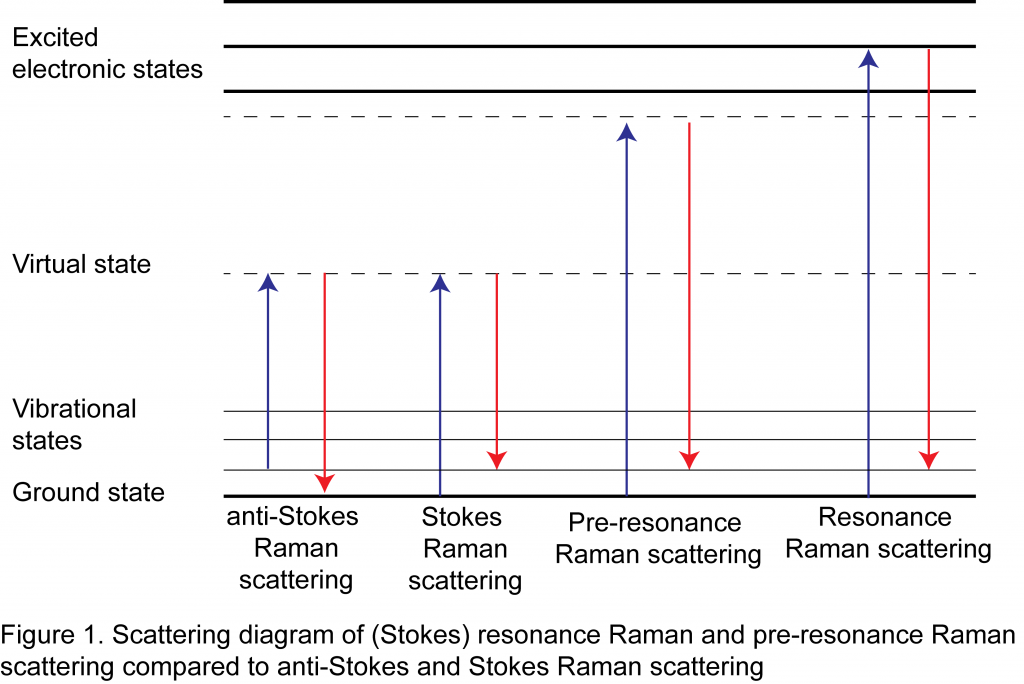What is Resonance Raman?
In this blog post, we’ll cover an underutilized aspect of Raman spectroscopy: resonance Raman scattering.
Resonance Raman is a technique that can be done using the same instrumentation that you would use for a normal Raman experiment; you might even be doing resonance Raman and may not be aware of it! The most important factor for resonance Raman spectroscopy is the chosen excitation wavelength. Resonance Raman scattering occurs when the laser excitation used is close to an electronic transition of the molecule of interest; in other words, the molecule is “resonant” with the laser energy. Figure 1 shows a diagram that compares normal Raman scattering, pre-resonance Raman scattering, and resonance Raman scattering.
If the resonance condition is met, the magnitude of the Raman scattering can be increased for some bands by a factor of 103-106 due to an increase in molecular polarizability. Since only one out of every ~106 incident photons are Raman scattered in a normal Raman experiment, resonance Raman may be useful to increase detection limits of certain molecules and decrease integration times. Although surface-enhanced Raman spectroscopy (SERS) is another popular signal enhancement technique, resonance Raman provides enhancement without any special sample preparation that is often required for SERS.
Resonance Raman is a good option for colored samples because chromophores- the part of a molecule that gives its color- will be the most enhanced since they absorb light the most. Chromophores are found in molecules that are used in many applications such as biomedicine, art conservation, and food chemistry. One classic example of resonance Raman is the excitation of carotenoids such as β-carotene, a red-orange pigment that colors many fruits and vegetables, with visible lasers such as 532 nm.
For more information on Raman scattering, visit our Knowledge page for an introduction to Raman spectroscopy.



 Looking for something specific?
Looking for something specific?





